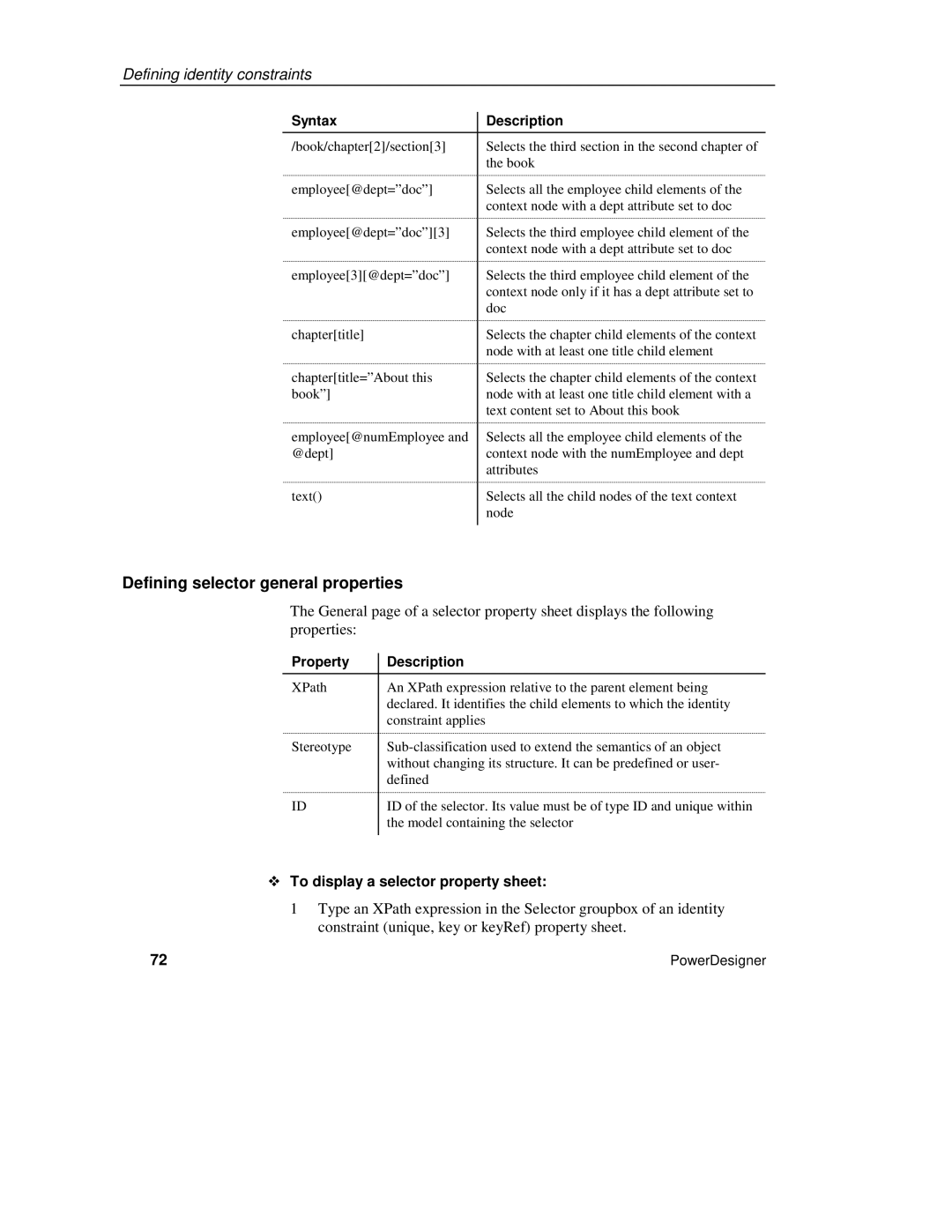
Defining identity constraints
Syntax | Description |
/book/chapter[2]/section[3] | Selects the third section in the second chapter of |
| the book |
employee[@dept=”doc”] | Selects all the employee child elements of the |
| context node with a dept attribute set to doc |
employee[@dept=”doc”][3] | Selects the third employee child element of the |
| context node with a dept attribute set to doc |
employee[3][@dept=”doc”] | Selects the third employee child element of the |
| context node only if it has a dept attribute set to |
| doc |
chapter[title] | Selects the chapter child elements of the context |
| node with at least one title child element |
chapter[title=”About this | Selects the chapter child elements of the context |
book”] | node with at least one title child element with a |
| text content set to About this book |
employee[@numEmployee and | Selects all the employee child elements of the |
@dept] | context node with the numEmployee and dept |
| attributes |
text() | Selects all the child nodes of the text context |
| node |
|
|
Defining selector general properties
The General page of a selector property sheet displays the following properties:
Property | Description |
XPath | An XPath expression relative to the parent element being |
| declared. It identifies the child elements to which the identity |
| constraint applies |
Stereotype | |
| without changing its structure. It can be predefined or user- |
| defined |
ID | ID of the selector. Its value must be of type ID and unique within |
| the model containing the selector |
|
|
To display a selector property sheet:
1Type an XPath expression in the Selector groupbox of an identity constraint (unique, key or keyRef) property sheet.
72 | PowerDesigner |
